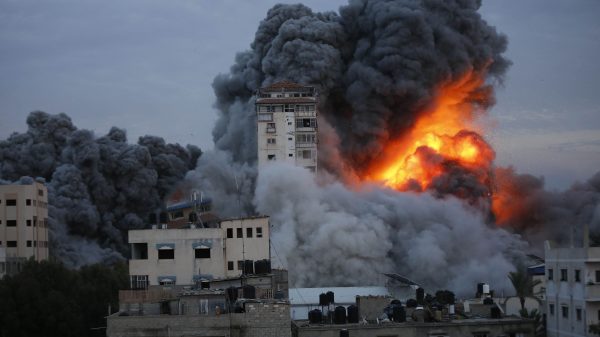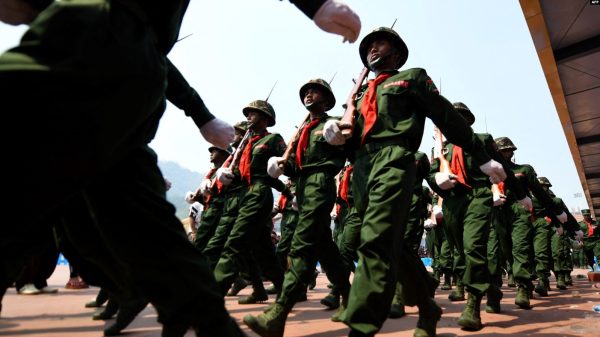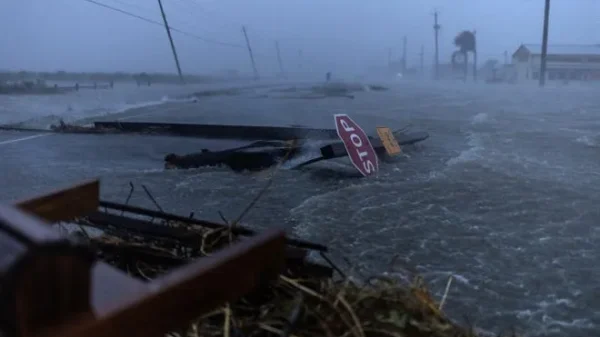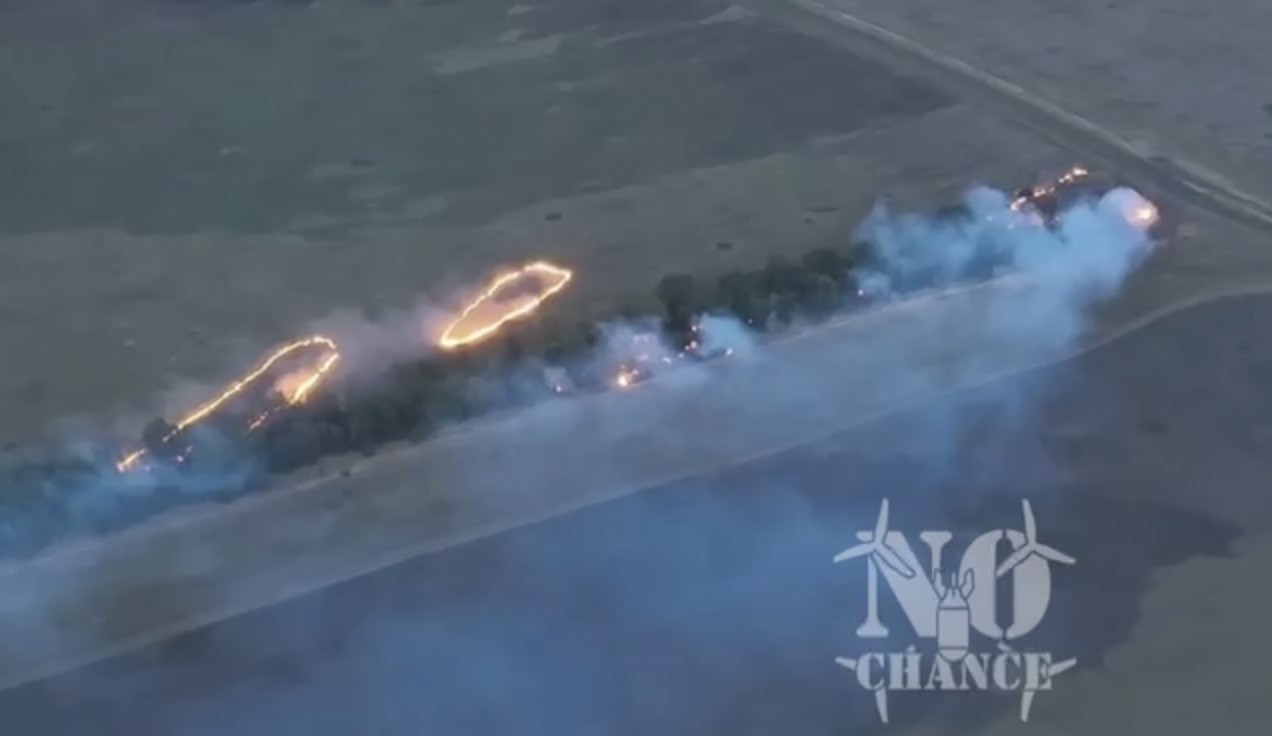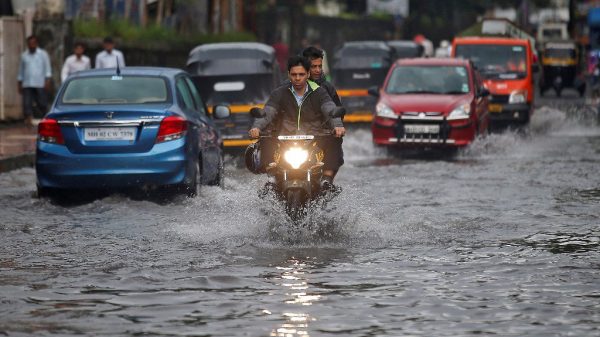In the ongoing conflict in Ukraine, a dangerous new weapon has emerged, threatening both military and civilian lives: thermite bombs deployed via drones.
These incendiary devices, capable of reaching temperatures above 2,200 degrees Celsius (4,000 degrees Fahrenheit), can burn through metal and cause massive fires.
Increasingly used for their destructive power, thermite bombs have raised concerns, particularly when employed by Russian forces, due to the significant risk they pose in densely populated areas.
Thermite is a chemical mixture of aluminum powder and iron oxide that ignites at extremely high temperatures. It has the capability to burn through materials like metals, unlike conventional explosives that rely on blast effects.
Thermite’s intense heat can melt steel, making it highly effective for disabling equipment, vehicles, and bunkers. Though traditionally used in industrial applications such as welding, thermite’s destructive potential has now found a place in warfare, where drones are used to deliver these bombs with precision.
Recent footage from the Ukrainian battlefield shows the devastating impact of thermite bombs. Ukrainian drone units, like the Birds of Magyar, have used these devices to target abandoned Russian vehicles with pinpoint accuracy.
The drones drop thermite bombs directly into vehicle hatches, where the heat incinerates everything inside. This level of precision, combined with the drones’ ability to evade traditional defenses, makes thermite bombs a powerful tool in modern warfare.
However, the growing use of thermite raises significant concerns. As these weapons become more prevalent, there is an increasing risk of their misuse, especially in urban areas.
Dr. Iain Overton, Executive Director of Action on Armed Violence (AOAV), warns of the potential consequences: “The widespread use of thermite bombs increases the likelihood of these weapons being deployed in populated areas.
The result could be catastrophic, with horrific injuries and loss of life among civilians.”
This is not just a theoretical risk. In Vuhledar, a town in eastern Ukraine, Russian forces have reportedly used incendiary bombs, possibly containing thermite, on residential neighborhoods.
Videos from the area show the bombs igniting upon impact, producing showers of white-hot sparks that set homes, vehicles, and infrastructure ablaze.
The use of such weapons in civilian areas is prohibited under international law, specifically Protocol III of the Convention on Certain Conventional Weapons (CCW).
Despite these restrictions, there are increasing reports of Russian forces deploying incendiary devices in civilian zones far from the front lines.
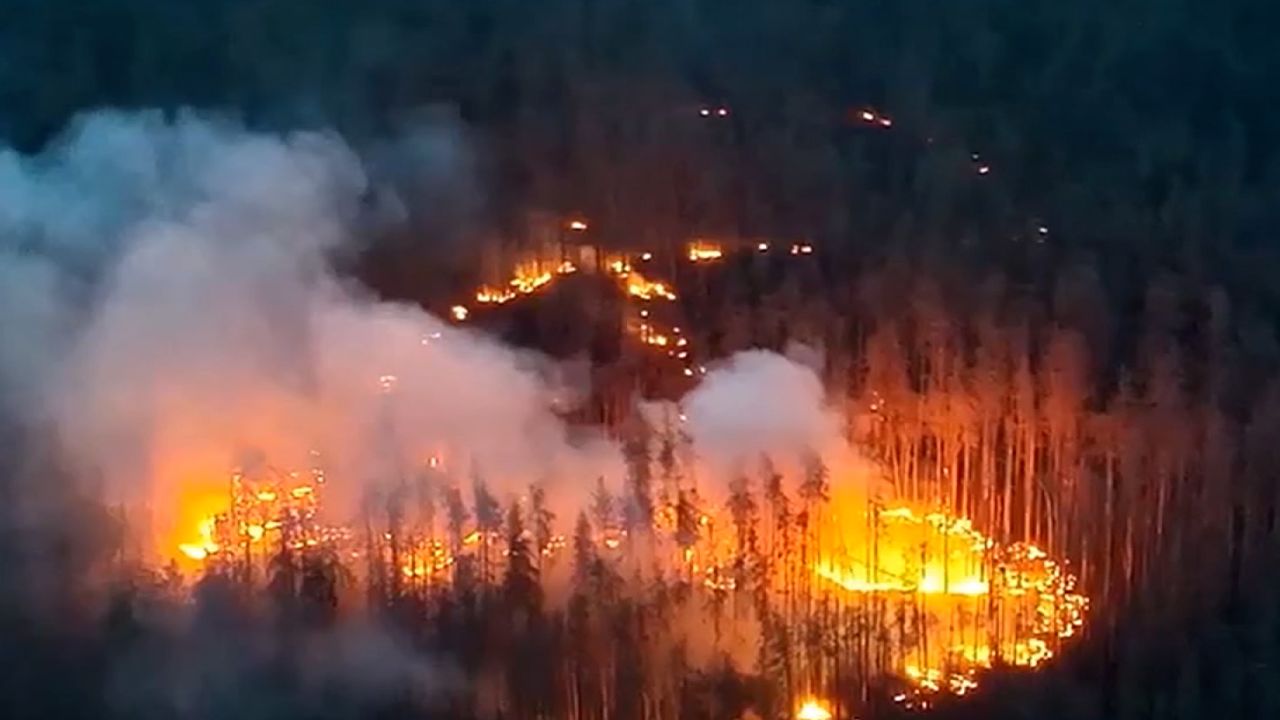
Dragon Drone Raining Molten Metal
The indiscriminate nature of thermite bombs makes them particularly dangerous in heavily populated regions. Unlike conventional munitions aimed at specific military targets, thermite bombs can ignite fires that spread uncontrollably, devastating entire neighborhoods, schools, hospitals, and homes.
The immediate destruction caused by the intense heat is compounded by long-term health risks for survivors, who may suffer severe burns, respiratory problems, and lasting psychological trauma.
The use of thermite bombs reflects a broader trend in modern warfare, where technological advances blur the lines between legitimate military targets and civilian infrastructure.
The combination of drones and thermite is especially concerning. Drones enable the precise delivery of incendiary devices to areas previously considered safe. A single thermite bomb can start fires that are difficult to extinguish, resulting in widespread damage.
The deployment of thermite bombs by Russian forces also raises serious questions about adherence to international humanitarian law. Targeting civilians with incendiary weapons constitutes a war crime under the Geneva Conventions and the additional protocols of the United Nations.
Yet, despite these legal frameworks, Russia has shown little regard for international norms, using such weapons against civilian targets in Ukraine, just as they did in Syria, where similar tactics were employed in support of the Assad regime.
Dr. Overton stresses the urgency of international intervention: “We must address the rising use of thermite bombs before it leads to another humanitarian catastrophe. The international community cannot remain silent while these weapons are being used in ways that violate both the laws of war and basic human decency.”
The unique chemical properties of thermite exacerbate the potential for mass casualties and destruction. Unlike conventional explosives, thermite burns intensely and can ignite almost any flammable material, including buildings, vehicles, and even human tissue.
Fires caused by thermite spread rapidly and are extremely difficult to control, leading to extensive damage and suffering.
Survivors of such attacks often face lifelong consequences, including severe burns, respiratory issues from inhaling toxic fumes, and psychological trauma from witnessing the destruction of their homes and communities.
There is an urgent need for the international community to consider stronger regulations or an outright ban on incendiary weapons like thermite bombs.
While these weapons may offer short-term tactical advantages in military contexts, their potential for misuse and the catastrophic consequences they bring to civilian populations far outweigh those benefits.
History has shown that once a weapon becomes widely used in military arsenals, it is often deployed beyond its intended scope, resulting in unforeseen and tragic outcomes.
The ongoing conflict in Ukraine should serve as a warning. The unrestrained use of thermite bombs represents a serious threat to civilian safety and global stability.
Without swift and decisive action, there is a risk that these cruel and inhumane weapons will become normalized in conflicts around the world.
Dr. Overton concludes, “The world must come together to discuss the future of incendiary weapons in modern warfare. We cannot afford to wait for another tragedy to occur. The time to act is now, to protect civilians and uphold the principles of international humanitarian law.”


